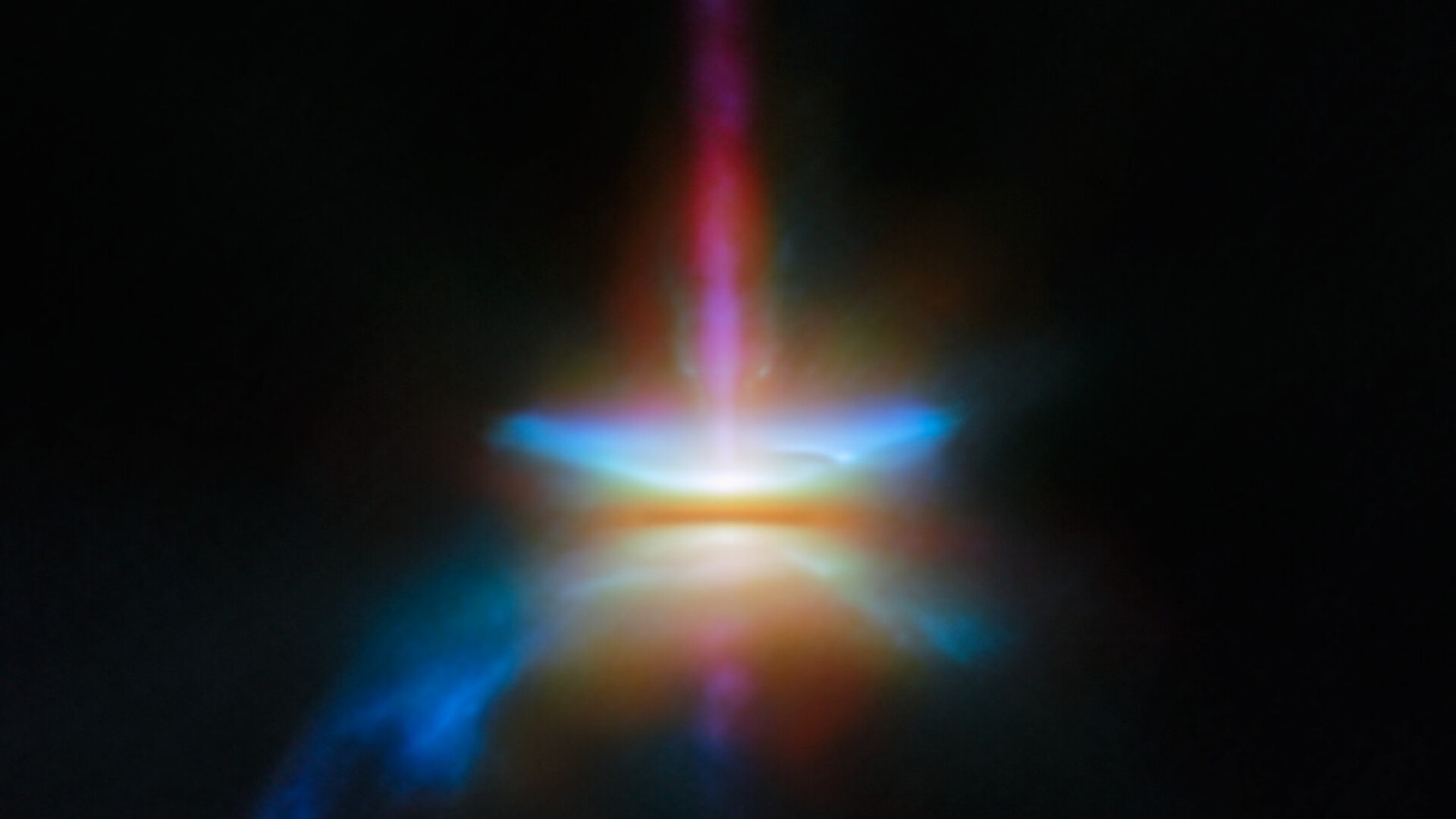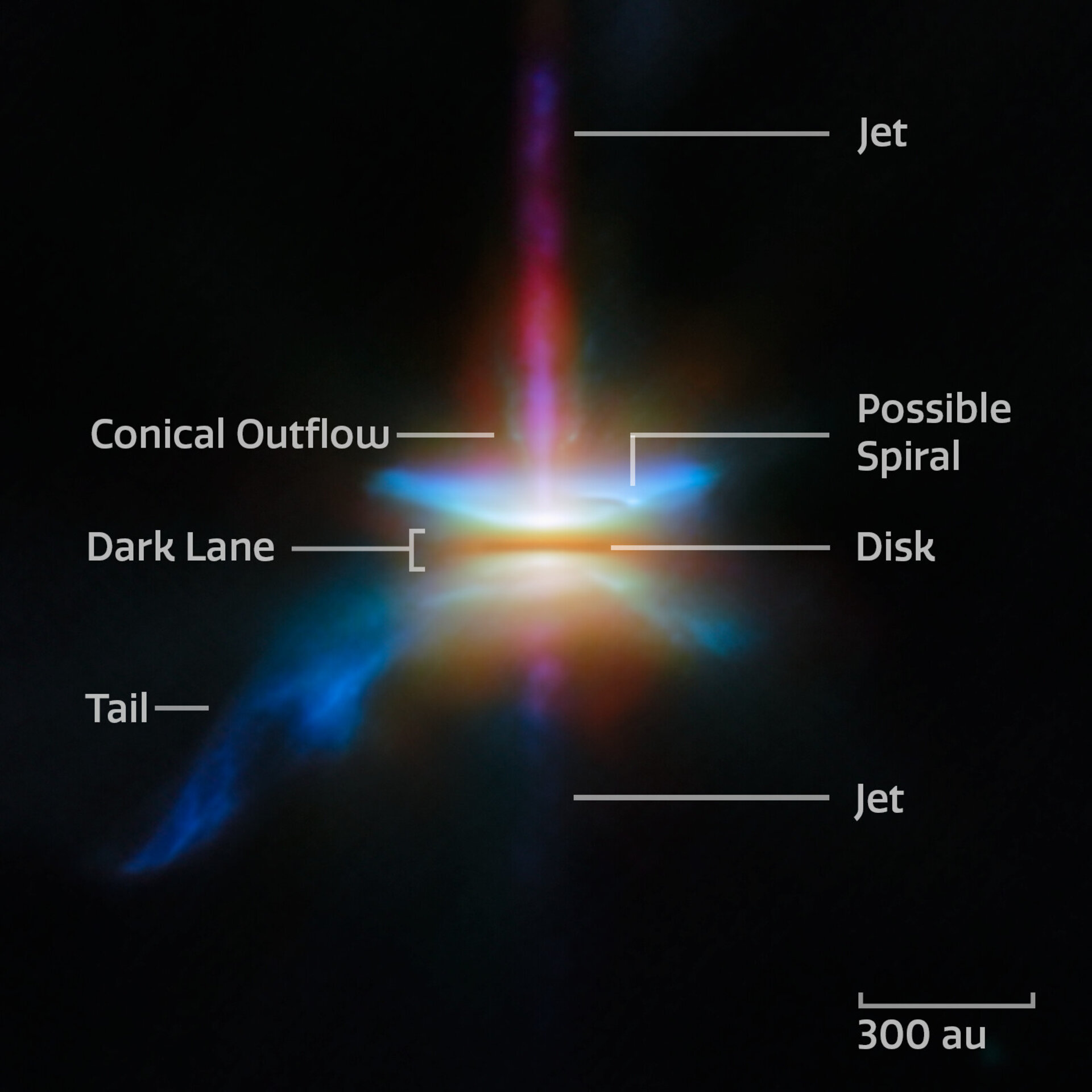
The image above may look similar to a combat scene in an Avengers movie, but it's actually a uniquely lit-up view of the dust and gas around a distant newborn star.
Captured by the James Webb Space Telescope (JWST), this celestial spectacle, known as Herbig Haro 30 or HH 30, highlights a luminous region around a star only half a million years old residing in the constellation Taurus. While the young star itself is obscured by the dense dust disk that embeds it, the intense winds and fast-moving jets it blasts into space collide with the sparser gas and dust above and below the disk, creating shockwaves that heat the material, causing it to glow.
Such illuminated pockets of dust serve as cosmic signposts for astronomers studying the processes by which stars interact with their immediate environments, particularly during the migration of dust grains in the protoplanetary disk, until they settle into a thin layer — an essential step in the formation of planets like those in our own solar system.
"These grains are only one millionth of a meter across — about the size of a single bacterium," the European Space Agency, which jointly leads JWST with NASA and the Canadian Space Agency, said in a statement. "The creation of a narrow, dense layer of dust is an important stage in the process of planet formation — in this dense region, dust grains clump together to form pebbles and eventually planets themselves."
From Earth's point of view, HH 30 is seen nearly edge-on. Snapshots like the latest JWST image are of particular interest to astronomers because they can scrutinize light shining through at different heights of the protoplanetary disk and learn more about the movement of dust grains, according to a paper published Monday (Feb. 3) in The Astrophysical Journal.
A team of astronomers led by Ryo Tazaki at the University of Tokyo in Japan combined JWST observations with ALMA and Hubble Space Telescope data and found distinct structures nested within one another in the disk. Chief among them is a high-speed jet blasting at a 90-degree angle from the center of the disk, which is surrounded by a wider outflow sculpted into a cone, according to the statement.

Tazaki and his colleagues also distinguished hints of a spiral-like feature similar to what's seen around other young protoplanetary disks. While the specific processes that may have produced it and a nearby tidal tail remain unknown, the researchers posit these features could be a result of the jet wiggling, a stellar companion within the disk, or a star that may have flown past the disk about 1,000 years ago and is now seen as a point source in the north direction.
"Together, these data reveal HH 30 to be a dynamic place, where tiny dust grains and massive jets alike play a role in the formation of new planets," the statement says.







